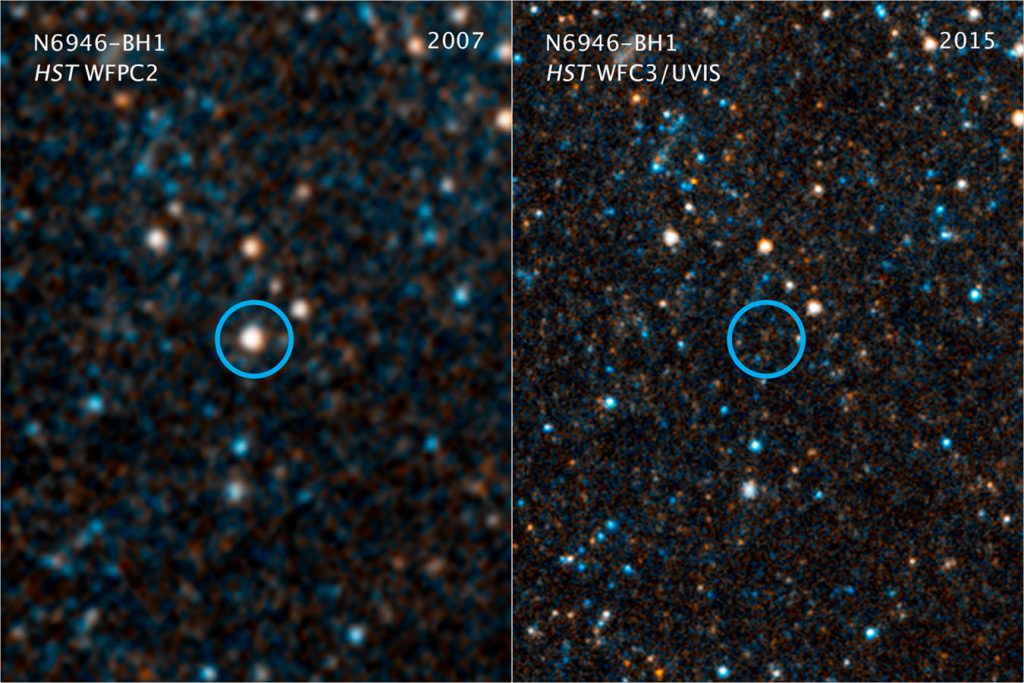The failed supernova. Astronomers witness a star becoming a black hole
For the first time ever astronomers might have witnessed a star actually become a black hole right before their eyes. But it is not how they would have expected it to be.
The Hubble telescope captured, in 2007, a large star – N6946-BH1 – , about 25 times the mass of our sun, around 22 million light years away, in the galaxy NGC 6946. In another image, captured in 2015, the star appears to be gone.

Scientists say one possible explanation is the star died and became a black hole. But this is where things get interesting. The most common theory about how a black hole forms is through a supernova – if a star is big enough, at the end of its life it will eject its out layers at high velocity in a massive explosion, while the inner core collapses into a tiny space creating a gravity well so great that light can’t escape, a black hole.
But this star didn’t go supernova. A team of astronomers monitoring the star with a large binocular telescope in Arizona saw the star get brighter in 2009, but not nearly as bright as a supernova. They called it a ‘failed supernova’ – the star does expel its outermost layers but gently and not in a big explosion.
The team checked to make sure the star isn’t hidden behind a cloud of dust by looking at infrared observations from the Spitzer Space Telescope, which would be able to see the heat of dust warmed by the star. Well there is some emission in the mid-infrared but it’s fading and fainter than what scientists would expect to see with a hidden star.
Astronomers think the infrared light is from the heat of gas falling back onto the newly formed black hole.
To help confirm the star is now a black hole, the team plans to analyse the observations taken with the Chandra X-Ray Observatory, which would be able to reveal X-rays being emitted by the gas falling into the black hole. Astronomers also want to continue monitoring the star’s location in visible light with Hubble, in case the star is still there and re-appears.
Scientists also want to look at the location with the upcoming James Webb Telescope ti check if there’s a surviving star hidden by cooler dust than can be observed with Spitzer.
If this really is a black hole birth, it would show that a star doesn’t need to go supernova to form a black hole. Astronomers actually haven’t seen as many supernovas occur with the largest stars as they would expect and have been wondering why this is. Estimates show that 10 to 30 percent of massive stars don’t go supernova and they’re still able to simply form a black hole.
“The typical view is that a star can form a black hole only after it goes supernova. If a star can fall short of a supernova and still make a black hole, that would help to explain why we don’t see supernovae from the most massive stars,” Christopher Kochanek, professor of astronomy at The Ohio State University and the Ohio Eminent Scholar in Observational Cosmology, explained.
If future observations confirm the findings, this would be the first birth of a black hole ever witnessed and the first failed supernova ever discovered, both of which would usher in an exciting era of astronomy research.